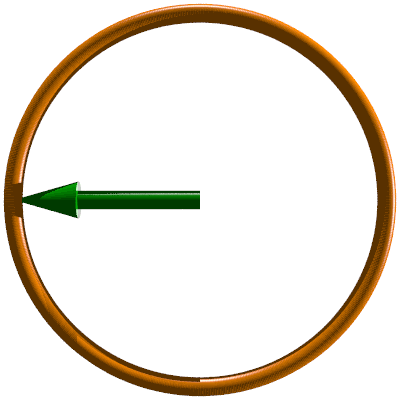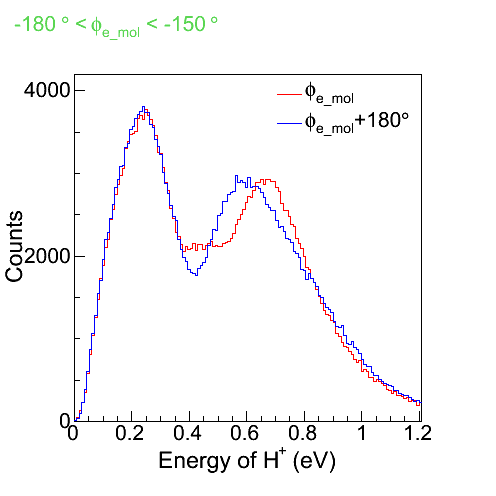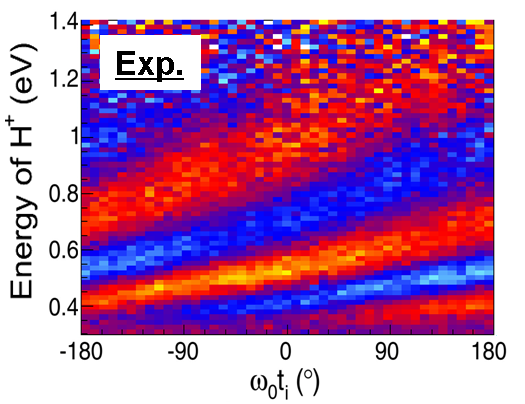Attosecond movies without attosecond pulses:
Electron motion in dissociating H2+
|
We created H2+ by ionizing H2 in a circularly polarized multicycle laser pulse (800nm). The electron in the H2+ is then driven by the laser laser field while the molecule dissociates. Eventually the electron localized at one or the other center of the H2+ Forming p + H. The direction and energy of the proton is measured.  If no coincidence with the electron is made the protons fly symmetrically to all directions. The goal of the experiment is to watch the breakup in time and investigate how the field controls to which of both protons the electron of the H2+ finally localizes. We achieve this goal by reading the time (phase of the laserfield) at which the H2+ was created In the field from the direction of the electron which escapes by tunnelionization into the field upon creation of the H2+ from H2.  This measurement of ionization time of the individual molecule during the long pulse relies on angular streaking: in a circularly polarized laser field, an electron which tunnels into the field aquires a final momentum which is perpendicular to the instantanious direction of the field at the Instant of tunneling. Even within a long pulse, the time at which the H2+ is created can therefore be measured with attosecond precision. By watching the energy distribution of the protons to a certain direction as function of the angle between the proton and the primary electron we therefor obtain a movie of the assymetric bond breaking in the field. 
 The up down asymmetry of the protons as function of the time at which the H2+ was created in the field can be understood as an interference between the two dissociation pathways shown here:  A simple two state model nicely reproduces the observed assymetry as function of phase and proton kinetic energy 
 The key idea of this experiment is to use the coincident detection of electrons and Ions with the COLTRIMS technique to make time resolved movies. We use the the rotating laser field as an ultrafast clockwork. The hand of this clock is the emitted electron, the time can be read by detecting the electron on one detector. On the other detector we watch the nuclear dynamics. 
Publication |